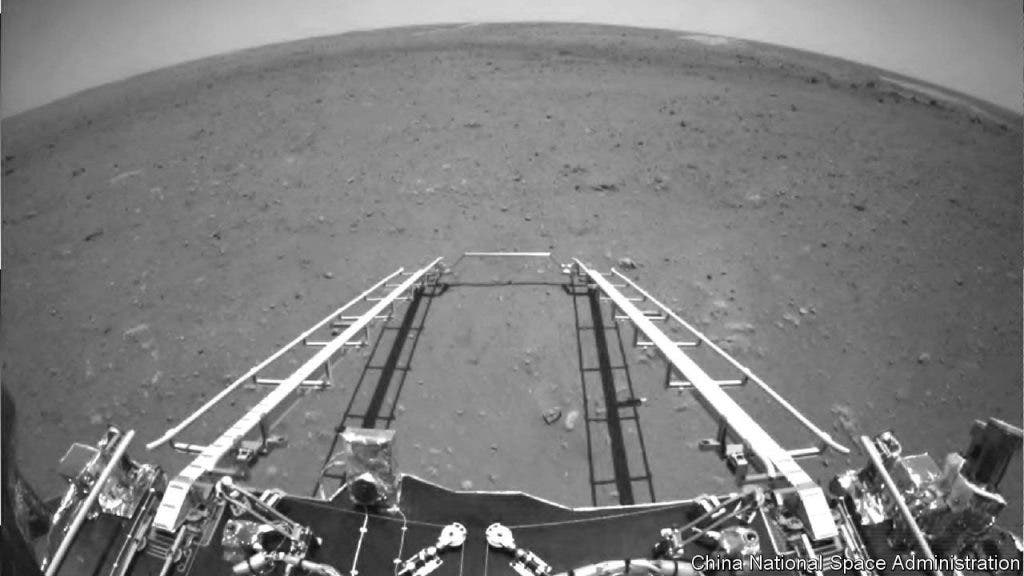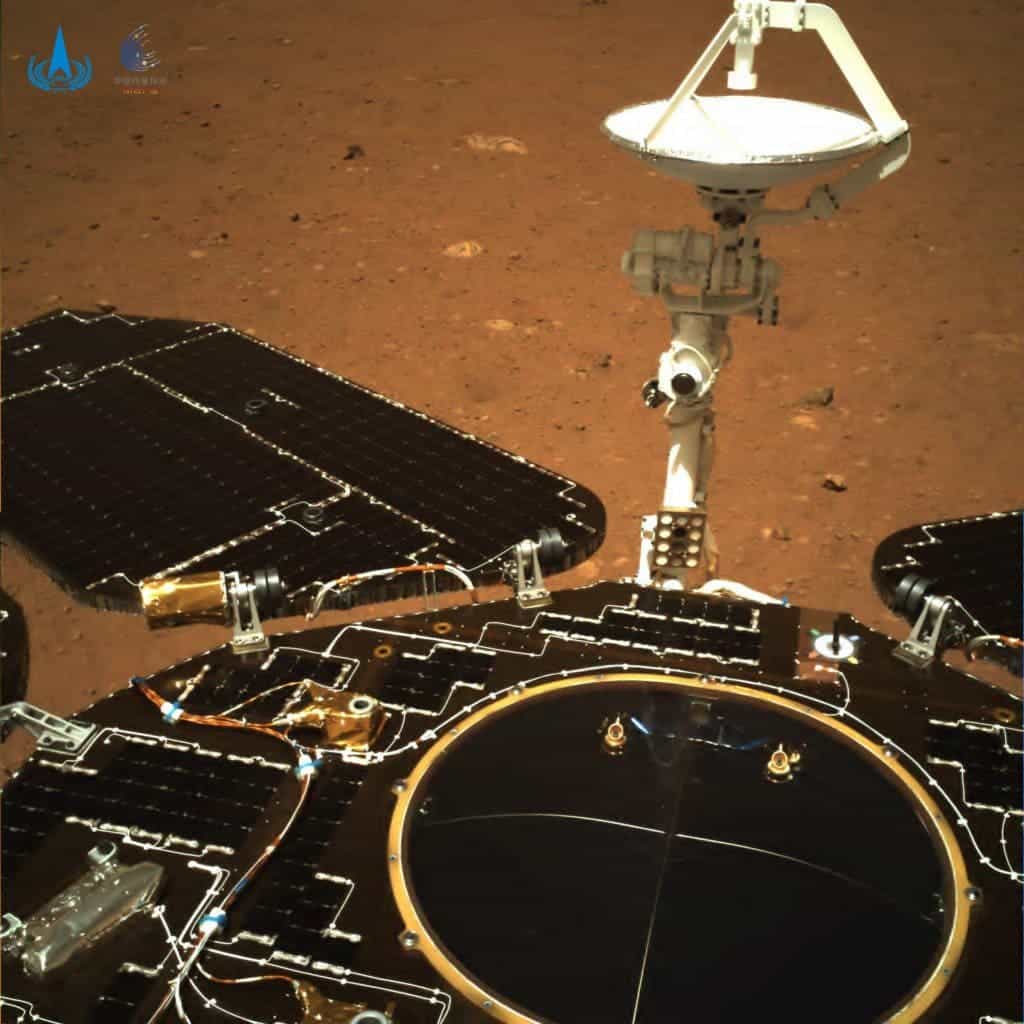After sending a few photos of its landing site, China’s Mars rover is now driving around and exploring the surface, said state-run Xinhua news agency said.

The first images beamed back by Zhurong were black-and-white images taken by the rover’s obstacle avoidance camera, as well as a color image taken by a navigation camera of the rear of the rover showing that its solar panel and antenna have unfolded normally, China’s Space Administration (CNSA) said.
China is now only the second nation after the United States to successfully put a probe on the surface of Mars and operate it for a significant length of time. Chinese scientists hope to get at least 90 Martian days of service out of the six-wheeled robot at its location on Utopia Planitia, a vast terrain in the planet’s northern hemisphere.
Zhurong, named after a god of fire in Chinese mythology, weights 240 kilograms and is equipped with six scientific instruments. It was launched by a type of rocked called Long March 5 from the Wenchang Spacecraft Launch Site in Hainan, China, on July last year. The rover then spent seven months en route to Mars before entering its orbit.

Its mission is to study the planet’s topography, geology, and atmosphere, seeking to understand the distribution of ice in the region. A tall mast carries cameras to take pictures and aid navigation, while five additional instruments will investigate the mineralogy of local rocks and the general nature of the environment, including the weather.
The mission, named Tianwen-1 or “Quest for Heavenly Truth,” is one of three that launched last summer, along with NASA’s Perseverance rover, which landed on Mars in February, and the United Arab Emirates’ Hope Probe. Unlike the US and China, the UAE probe is not intended to land on Mars but instead to study the planet from orbit.
“As the international scientific community of robotic explorers on Mars grows, the United States and the world look forward to the discoveries Zhurong will make to advance humanity’s knowledge of the Red Planet,” Bill Nelson, NASA’s administrator, said in a statement, congratulating China on the first images of the mission.
China’s President Xi Jinping sent his congratulations on the successful Mars mission, hailing it as an “important step in China’s interstellar exploration.” China had already attempted to reach Mars in 2011 with the Yinghuo-1 probe. But the mission failed due to a malfunction that stranded the probe in Earth’s orbit shortly after launch.
The country’s space program reached world headlines earlier this month because of an out-of-control rocket that plunged into the Indian Ocean. The rocket, Long March 5B, had launched as part of China’s new space station into orbit in late April and had then been left to hurtle through space uncontrolled until Earth’s gravity pulled it back in.
China is already a space power in its own right, after sending astronauts into space, powering probes to the Moon, and landing; only the US and Russia can claim this. China still has a way to go to catch up with the US and Russia, as it’s lacking the decades of experience the two countries can boost
China has come a long way in its race to catch up with the United States and Russia, whose astronauts and cosmonauts have decades of experience in space exploration, but it’s making great strides. Already, China wants to send people to its new lunar station by 2022.
However, the country has also drawn international criticism recently due to its inability to control return of one of its rockets, which ultimately disintegrated over the Indian Ocean in an uncontrolled landing back to Earth.


